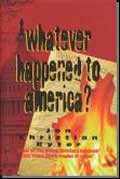DEMOGRAPHY & ECONOMY: THE GOOD, THE BAD, AND THE UGLY
By Professor Gordon E. Finley, Ph.D.
March
27, 2009
NewsWithViews.com
The
release on March 18, 2009, of preliminary childbirth data from the National
Center for Health Statistics (NCHS) for 2007 has yielded mixed news
– some good but most providing troubling insight into potentially
crippling problems for American society and the American economy. These
data suggest that 2007 was a very bad year, indeed. While most media
focused on the teen pregnancy data, they missed the bigger picture.
Here is the bigger picture.
The Good news in the NCHS report is that more warm
cuddly babies were born in 2007 than ever before in American history
-- barely eclipsing the previous high exactly a half-century earlier
in 1957. We will call 1957 Baby Boom I and 2007 Baby Boom II.
The Bad news is the timing of these births. For the economic viability of our society, it would have been better had they arrived a quarter century earlier. Unfortunately, it will be at least 18 to 22 years before the Baby Boom II generation shifts from being an economic liability to an economic asset. This is relevant because Baby Boom II is needed to contribute to the support of Baby Boom I. Phrased in terms of baby booms and busts, what we have today is a bimodal distribution with the largest “modes” at the opposite ends of the life-span: Baby Boom I is on the cusp of retirement and Baby Boom II is on the cusp of the terrible two’s.
In fall 2007, the Social Security Administration made a big deal out of the first member of the Baby Boom I generation to file for Social Security. But fall 2007 also was the beginning of our slide into our current recession/depression. As the Baby Boom I generation prepares to retire, they are watching the value of their personal assets, 401k investment retirement plans, and the value of their homes plummet. More of this generation will require government assistance with their retirement health care, housing, and income than either they or the government ever had in mind.
The Ugly news is that 40% of the births in 2007 were to unmarried women. By contrast, in the 1950’s the unmarried birth rate hovered around 4% -- a tenfold difference. A large number of the unwed mothers and their children will require significant government financial support for unknown portions of their life-spans. And, despite claims for the delights of cohabitation and the joys of single motherhood by choice, the hard social science and economic realities are that children of unwed mothers – as a group – fare more poorly than their intact family counterparts on virtually all measures, including their eventual social and economic contributions to society. The prospects for this 40% of the Baby Boom II generation, based on social science research, would be worrisome in good economic times -- and likely will be worse in hard economic times. As they enter adulthood, these children are much more likely to become criminals and unproductive economically than children of married parents. As always, dads matter.
|
Subscribe to the NewsWithViews Daily News Alerts! |
In sum, the NCHS data show us where we are and where we are going as a Nation. The feet of Baby Boomers I and II already are on the ground. We ignore these demographic realities at our peril. Finally, and perhaps most critically, the last and current federal administrations have used deficit financing at unprecedented levels. If they are counting on Baby Boom II to pay back federal indebtedness, they are going to have to wait a very, very long time -- at best.
� 2009 - Gordon E. Finley - All Rights Reserved










